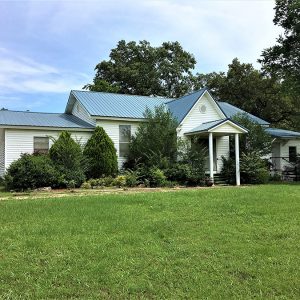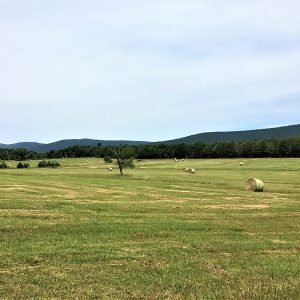calsfoundation@cals.org
Evening Shade (Scott County)
Evening Shade is an unincorporated community in north-central Scott County located along Highway 28 West. The community was established at the base of Poteau Mountain, which played an important role in naming the community. Agriculture has traditionally been important to the area.
Prior to European exploration, Evening Shade was a wilderness with native vegetation and numerous species of wildlife, some of which no longer inhabit the area. Early inhabitants were present during the Archaic, Woodland, and Mississippian periods. There are numerous archaeological sites located along the Poteau River near Evening Shade, and evidence from these sites indicates that the Caddo Indians once lived in the area.
Throughout the late seventeenth and early eighteenth centuries, French trappers and explorers traveled west from the Arkansas Post along the Arkansas River. From there, they began traversing smaller tributaries such as the Fourche La Fave River and Poteau River. It is likely that they traveled through the area where Evening Shade was established.
White settlers began arriving in Evening Shade by the late 1820s. The area continued to be settled during the 1830s and 1840s. Most families participated in a wide variety of agricultural practices.
The Civil War affected people living in Evening Shade as it did throughout the rest of the Confederacy. Men who were called to fight in the war served with both the Confederacy and Union. The women and elderly were left at home to look after family homes and farms.
It is unknown when Evening Shade was officially established; however, the origin of the community’s unique name is known. The original church house was built at the foot of a tall peak on Poteau Mountain. Early in the afternoon, at approximately 3:00, the peak shaded the church from the sun. At that time, the word “afternoon” was seldom used, and instead that time of day was referred to as “evening.” Thus, the church and community became known as Evening Shade.
In May 1882, the Scott County Courthouse burned, thus destroying all records that defined the boundaries of the various school districts that had been established throughout the county. In August, the county court reestablished the boundaries of the fifty-six school districts active in the county, including the Evening Shade School District.
During the Great Depression, many farmers in Evening Shade suffered from economic distress. Cotton, one of the main crops, had dropped from forty cents per pound to five cents. The Evening Shade School District was consolidated with the Waldron School District in 1929.
A church is still located in Evening Shade in the twenty-first century, although it is not in the original location of the old church that gave the town its name. Several residents live in the community in the twenty-first century, and agriculture continues to be an important practice in the area.
For additional information:
Cate, Michael. History of Scott County, Arkansas. Dallas, TX: Curtis Media Corporation, 1991.
Echoes: The Scott County Historical and Genealogical Society Quarterly. Waldron, AR: Scott County Historical and Genealogical Society (1986–).
Goodner, Charles. Scott County in Retrospect. Mansfield, AR: Frank Boyd, 1976.
Goodner, Norman. A History of Scott County, Arkansas. Siloam Springs, AR: Bar D Press, 1941.
McCutcheon, Henry Grady. History of Scott County, Arkansas. Little Rock: H. G. Pugh and Company, 1922.
Ty Richardson
Richardson Preservation Consulting
 Evening Shade Baptist Church
Evening Shade Baptist Church  Evening Shade Agriculture
Evening Shade Agriculture  Scott County Map
Scott County Map 



My grandmother was a teacher at the school, and my great-grandfather Henry Taff was the principal. When the new church was established, my grandfather Herman Graves was a deacon. I now live in Oklahoma, but my parents still live in Evening Shade.